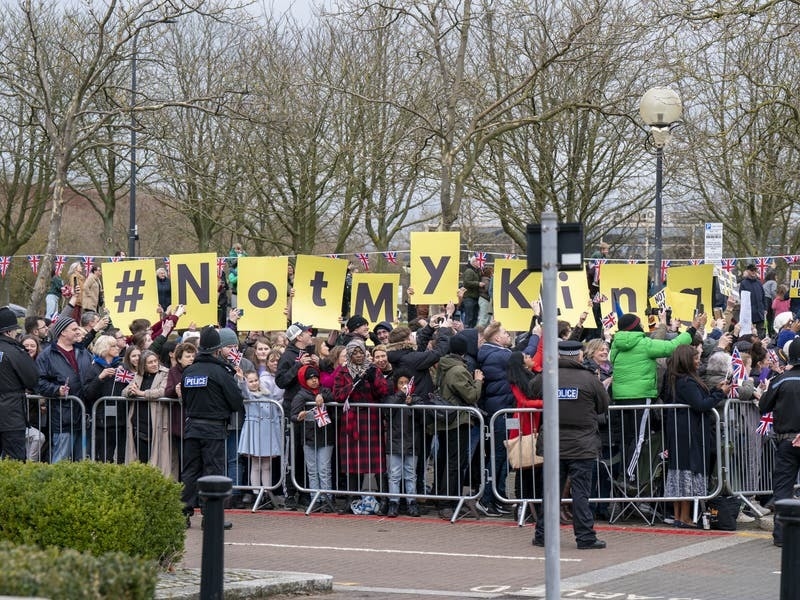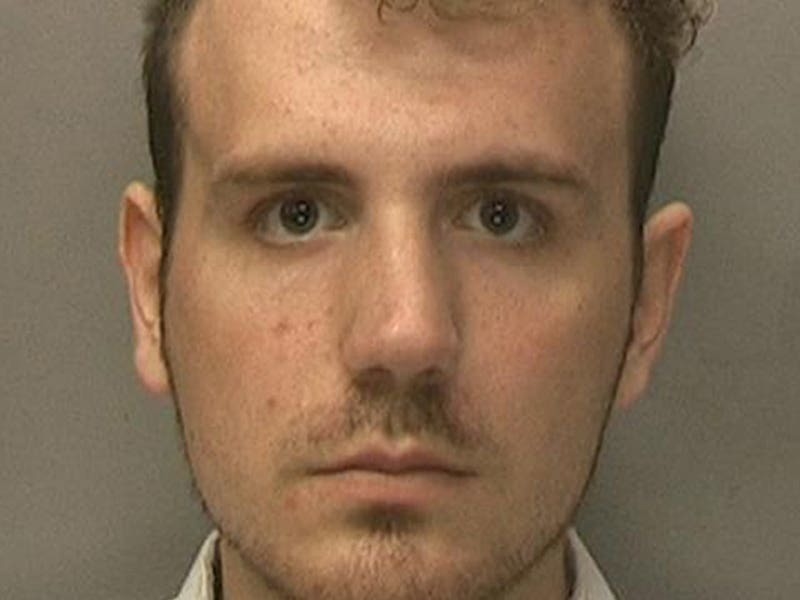The King faced anti-monarchy protesters during a visit celebrating Milton Keynes being awarded city status but chants of “God save the King” drowned out the demonstrators.
Charles had travelled alone to Milton Keynes after it was announced on Monday the Queen Consort had tested positive for Covid and he told one well-wisher “She’s getting better”.
When Charles first arrived at a city centre church to meet community representatives, he went on an impromptu walkabout shaking hands with some of around 300 people who lined crash barriers.
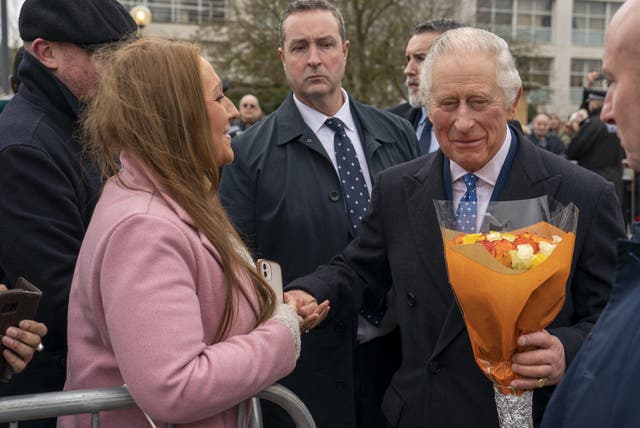
After a few minutes he crossed to the other side of a public area, where the protesters had gathered holding “Not My King” signs, and carried on chatting and shaking hands a few feet from them before heading inside Church of Christ the Cornerstone.
Graham Smith from Republic, which campaigns for an elected head of state, was part of the protest and said it was aimed at raising awareness for a larger demonstration his organisation is planning for the coronation.
He added: “Everything has changed with the Queen gone and Charles on the throne.
“He hasn’t inherited the deference and sycophancy that was around the Queen, and we’ve just had a new head of state without anybody being asked.”
MK, as Milton Keynes is known to locals, has become home to thousands of businesses since the site was developed more than 50 years ago and is used as a model for cities around the world.
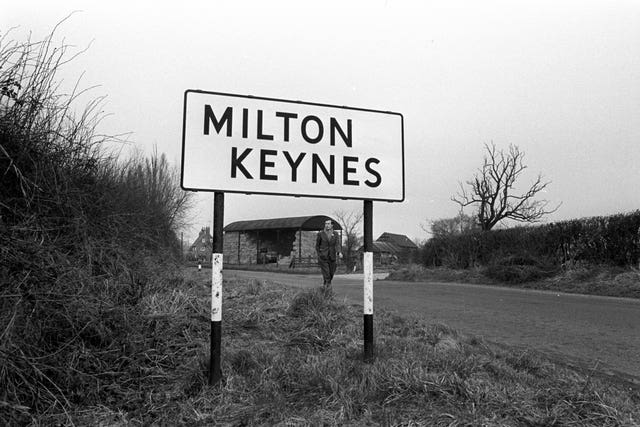
In a speech Charles said about Milton Keynes: “It is a name, as we know, that evokes the memory not only of one of our greatest poets, but also of one of our greatest economists.
“It is that fine combination of lyricism and practical realism which marks out Milton Keynes today.
“That 25% of its urban area is covered in parkland and woodland, that there are over 22 million trees and shrubs across its urban spaces, that it is home to innovation through the Open University, all distinguish this new city as something special in its own right, that we can celebrate with its inhabitants at this moment in its history.”
During his visit to the church the King toured stands manned by organisations representing many aspects of Milton Keynes life, from the arts and religion to the natural world, young people and business.
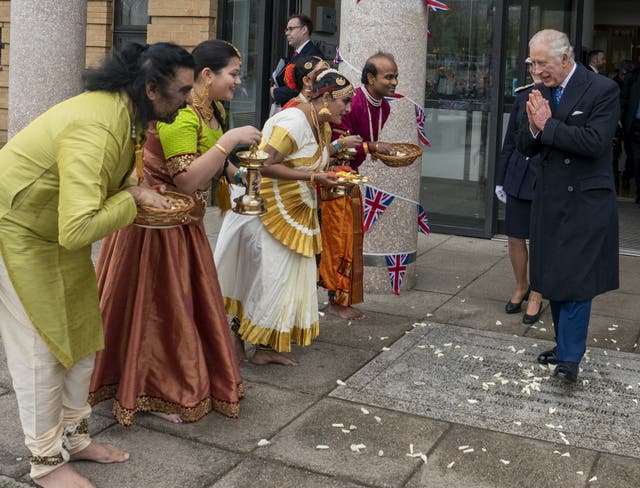
The King went on a brief walkabout when he left, and a troupe of Indian dancers reprised their performance delivered when Charles first arrived.
He stopped to talk to well-wisher Tazmin Farrington, who said afterwards she asked about Camilla’s health and Charles replied, “She’s getting better”.
Charles later met volunteers at a food bank in the suburbs of the city who were not expecting him.
They were only told he was visiting an hour before he arrived and the King laughed when he was told the identity of their VIP guest had been kept secret, saying “You didn’t know why?”
One of the themes of the King’s first Christmas address was the cost of living crisis and the broadcast featured footage of a food bank.
Louisa Hobbs, operations manager of MK Food Bank which supports more than 5,000 families across the city, showed Charles round and said his interest was clearly “genuine” after he explicitly requested to visit a food bank in Milton Keynes.

